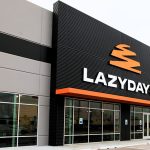Controlling costs separates the top financial performers in the outdoor sporting goods manufacturing business from median performers, according to a report released last week by the Outdoor Industry Association.
The 22-page report, prepared by Profit Planning Group of Boulder, CO for OIA, found that the most profitable quartile of 46 OIA members who responded to a survey did a significantly better job with manufacturing costs and controlling direct labor expenses, giving them an edge in profitability.
The report provides manufacturers with a way to benchmark their own financial performance by breaking out performance for the median, or typical firm in various groups. Nineteen of the responding firms reported sales of less than $5 million, 13 reported sales of $5 million to $20 million and 12 reported sales of more than $20 million. Thirteen were apparel-only companies and 33 had mixed lines of business. Nine manufactured exclusively at their own U.S. facilities, while 22 outsourced manufacturing and 15 used a combination of both.
One of the studys more interesting findings: the typical company with mixed lines of business derived a whopping 39.4% of their direct sales through pro-deal programs, compared to 20.6% for apparel only manufacturers. The typical apparel firm derived the remainder of its direct sales from owned stores (14.8%), direct mail and catalogues (26.3%) and online (38.3%). For the typical mixed line manufacturer, those percentages were 11.3%, 6.5% and 42.8% respectively.
The study confirmed what many have long known or suspected-making money in the industry with sales of less than $5 million is very difficult. The typical firm with sales of less than $5 million had a profit margin of -0.9%, a return on assets of -2.1% and a return on net worth of -2.9%.
There was a big gap detected between the financial performance of the typical firm of the entire group and the median firm taken from the top quartile, which consisted of the 12 most profitable companies. The median OIA firm generated sales of $5.7 million and a pre-tax profit of 3.4%, compared to sales of $5.1 million and pre-tax profit margins of 10.6% for the median high-profit firm.
The gap was more pronounced when measuring return on assets, where the median high-profit firm reported a 28.6% return on assets compared to 7.1% for the median firm.
The big differentiator for the high-profit firms was gross profit margin. The median top-tier company had a margin of 48.4%, compared to 40.8% for the typical firm. The median top-performing firm also did a better job managing SG&A costs, keeping those expenses at 14.6% of gross sales, compared to 16.2% for the typical firm. Finally, while the median high-profit firm paid an average salary that was nearly 9% higher, each of its employees generated 35% more in sales. The median high-profit firm collected from customers five days faster on average than the median OIA firm.
High-profit firms are significantly better positioned to grow in tough credit markets, according to the studys “growth potential index.” The index measures how fast a firm can increase its sales each year using only internally generated funds. The median high-profit firms index was 39.6%, or more than twice as high as the median firms index of 18%. The high growth median company boasted a much higher ratio of cash to current liabilities, or 44% vs. 17.5%.
Interestingly, the high-profit median firm used technology less in 10 of 16 areas measured than the median firm for the whole group.
Sales of the typical apparel-only vendor grew 22.4% in 2007, compared to 9.1% for the typical company that makes a mix of apparel and other goods. The typical mixed-line vendor incurred the bulk of its cost of goods in direct material costs, while the typical apparel-only firm spent the most on contract manufacturing. Personnel expenses comprised 71.6% of costs at the more labor intensive apparel-only company, and just 22.2% of expenses at the mixed line company.
The study also confirms what many have suspected for a long time. If you want to work with women, work for an apparel company. Women comprised 58% of the workforce at apparel companies compared to just 47% at companies with mixed lines of business.












